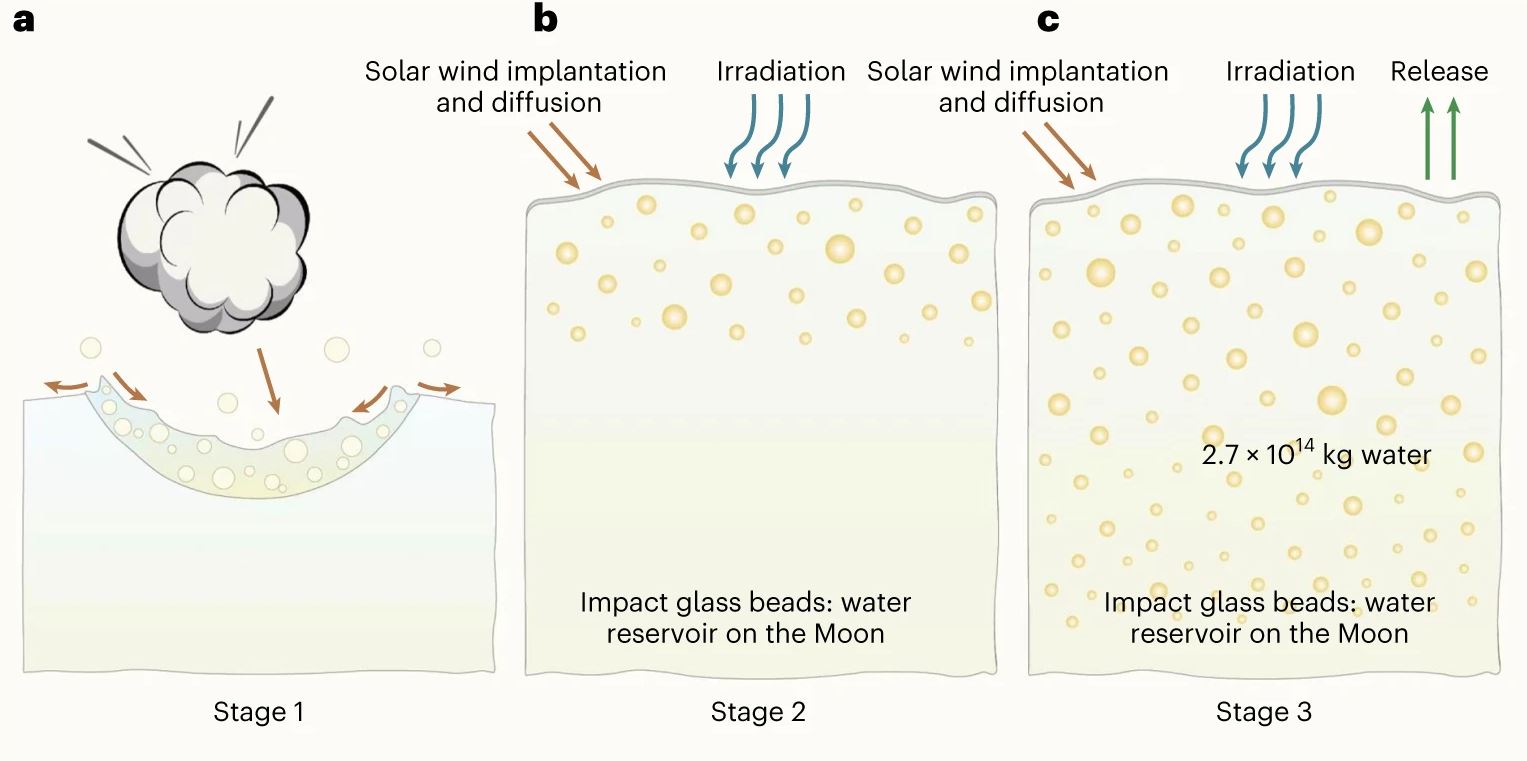China’s Chang’e 5 lunar mission unearthed a new and surprising water source on the moon. According to a paper published in the journal Nature Geoscience, researchers discovered water embedded in glass beads in lunar dirt left behind by meteorite impacts.
The moon’s surface is dotted with minute, spherical silicate glass beads. These tiny glass beads formed millions of years ago, either as a consequence of asteroid impacts on the moon or lunar volcanic activity.
“Maybe it is a common feature in our solar system and a way to understand other worlds,” Sen Hu, a professor at the Institute of Geology and Geophysics at the Chinese Academy of Sciences in Beijing and an author of the paper, told the Wall Street Journal.
The tiny beads collected by the Chinese rover in 2020 were found in various colors, and are also said to vary in size from the width of a single and up to several strands of hair. While only a small amount of water was found inside each bead, as a whole, the researchers believe they contain significant amounts of water since there are potentially trillions of them.
However, mining water from the beads for future lunar expeditions poses a significant challenge.

To extract the water from the glass beads, a future lunar mission would have to heat them. So, more studies are necessary to determine whether this process is achievable, and whether the water would be safe for human consumption.
While the team generates more samples from these glass beads to determine if the water can be extracted, this discovery shows that water may be continuously renewed on the moon’s surface. That means a new, reliable source of water that could potentially be used by future crews as drinking water, or to produce breathable air or rocket fuel.
NASA is already working on future missions to the moon, with a deadline to put astronauts on the lunar surface by 2025. These missions will specifically target the south pole, where scientists hope to find frozen water in the permanently shadowed craters. With China’s new findings, future missions to the moon could use both.
This story originally appeared on Simplemost. Check out Simplemost for additional stories.


